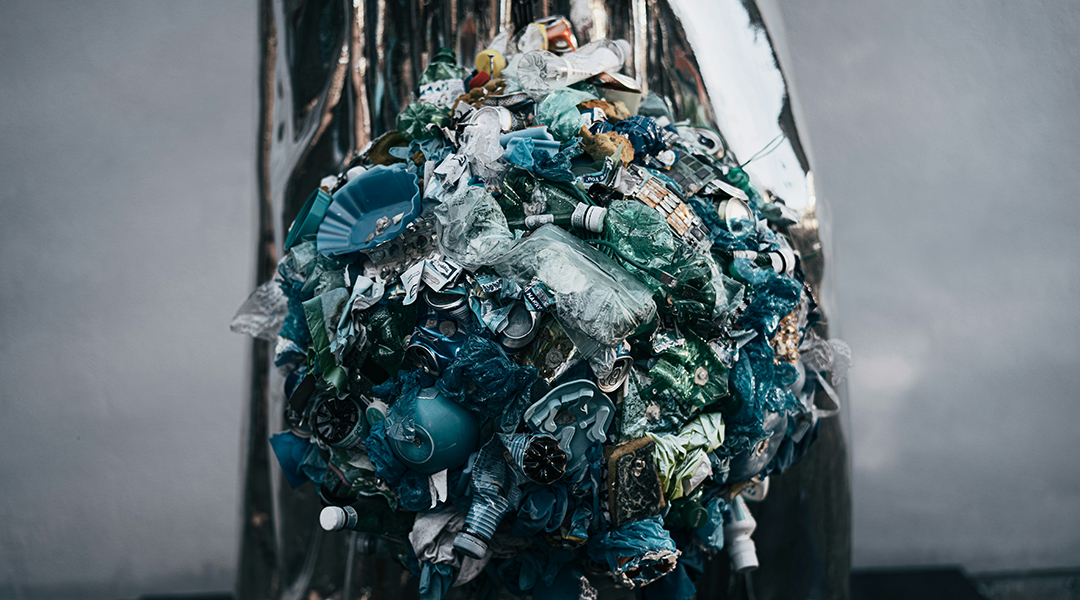Amid mounting concerns over the state of the climate and environment, significant efforts have been spent developing innovative solutions to reduce plastic waste and capture carbon dioxide from the atmosphere — most addressing one crisis at a time.
However, researchers have recently devised a sustainable, closed-loop process for producing and recycling polycarbonate plastic while also capturing carbon, effectively addressing the two challenges simultaneously.
Conventional plastics recycling is a mechanical process that involves sorting, cleaning, and granulating the plastic into flakes before heating it at high temperature, and not all plastics can be recycled in this way — though it is more environmentally friendly than incineration or landfill disposal.
“However, [mechanical recycling] has a critical issue because repeated exposure to high heat can cause permanent changes in the chemical structure of the plastic, resulting in poor-quality recycled plastics,” explained Hoyong Chung, a professor at Florida State University and scientist on the current study.
Using lignin waste to make new plastics
The recycling method developed by Chung and his post-doctoral researcher, Arijit Ghorai, fundamentally differs from mechanical recycling. It involves converting polycarbonate into its original building blocks in a process known as depolymerization.
Key to this process is lignin, a major component of biomass which is now being recognized for its potential to at least partially replace fossil fuels in the production of plastics and other commercial products owing to its renewability, broad market, and low cost. It’s also a major unwanted byproduct of the biofuel and pulp and paper industries, where the latter generates approximately 50–70 billion tons of lignin annually. Much of this lignin goes to waste.
The “waste to wealth” concept isn’t new. Scientists have been turning all kinds of normally discarded debris, such as avocado pruning residue and metal shavings, into useful products like plastics and hydrogen fuel.
Chemists have also known for decades that carbon dioxide can be transformed into polycarbonate plastics, but the traditional process isn’t the most sustainable. Typically, carbon dioxide is reacted with fossil fuel-derived compounds, and the reaction not only requires high temperatures and pressures — meaning high energy expenditure — but also meticulously designed metal catalysts, which adds complexity to the process and also monetary costs, depending on the metal used.
To make this process more sustainable, Chung and Ghorai used lignin instead of a fossil fuel-derived starting material as well as a metal-free catalyst. Lignin is a good alternative because its chemical structure is rich in functional groups that can react with carbon dioxide in the presence of a suitable catalyst.
This reaction, which the researchers catalyzed using an organic molecule, produces cyclic carbonate, the building block or “monomer” of polycarbonate. The second step, the polymerization of cyclic carbonate into polycarbonate, can be done at room temperature and normal atmospheric pressure — much milder conditions than those required for the conventional synthesis.
By adjusting the catalyst, catalyst amount, and reaction time, the properties of the plastic, such as its thermal stability and strength, can be controlled, allowing the polycarbonate to be customized for specific applications. After its intended use, it can then be recycled via depolymerization, where the plastic is converted back into its monomer.
A circular plastic economy
Chemical recycling, the umbrella term for depolymerization and other technologies that convert plastic waste into its basic units to recreate the same product, and chemical upcycling, which is the conversion of plastic waste into products of higher value, seem to be the missing link in transitioning to a circular plastics economy.
Chung and Ghorai’s chemical recycling approach was relatively simple — to obtain the original cyclic carbonate, they heated polycarbonate at 90 °C for 12 hours using the same organic catalyst to speed up the depolymerization reaction.
“We can use these recycled monomers to resynthesize the original, high-quality polymer,” Ghorai explained. “By adopting this method, we can avoid any degradation in polymer quality after recycling.”
“[Ideally], the developed polycarbonates are capable of undergoing [repeated] closed-loop recycling without compromising their original properties,” he pointed out.
Ghorai and Chung confirmed through analyses that the properties of the recycled polymer were identical to those of the original, pristine polymer. However, more tests are needed to determine how many times the polymer can actually be recycled without degrading.
The feasibility, safety, and efficiency of the process also need to be studied outside the lab on a much larger scale, but the researchers hope it will eventually be used to produce high-value chemicals and specialized polymers for biomedical and energy-storage applications.
“In the short term, the polymer can be used for low-cost, short-term plastic products in sectors such as construction, agriculture, packaging, cosmetics, textiles, diapers, and disposable kitchenware,” Chung said.
The study did not quantitatively assess how much carbon dioxide was captured by lignin, but the researchers told us these experiments are underway. They also plan to process the polycarbonate — which they prepared as a powder — into different forms, such as films, for commercial use.
Despite the work that still needs to be done, this study demonstrates that a circular plastics economy for polycarbonate could be possible.
Reference: Arijit Ghorai and Hoyong Chung, CO2 and Lignin-Based Sustainable Polymers with Closed-Loop Chemical Recycling, Advanced Functional Materials (2024). DOI: 10.1002/adfm.202403035
Feature image credit: Claudio Schwarz on Unsplash

















